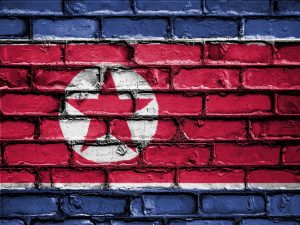North Korea’s resumption of missile launches after a one-year hiatus puts the United States and its allies back on the well-trodden path of provocations, debating regime intentions, and scrambling for a proper policy response.
Pyongyang’s launch of short-range ballistic missiles was a violation of U.N. resolutions and requires a U.S. response, but isn’t a “crisis” nor “major challenge” to Washington. However, the Biden administration should brace itself for higher end provocations that Kim Jong-un likely already has planned for the coming months.
On March 25, Pyongyang launched two short-range ballistic missiles (SRBMs) whose flight profile was consistent with the KN-23 or KN-24 that were extensively tested in 2019-20. The launches could be part of North Korea’s ongoing large-scale Winter Training Cycle military exercises, which Pyongyang continues to hold despite four years of the United States and South Korean cancelling or reducing their own exercises.
Last week, North Korea launched two short-range cruise missiles that were not violations of U.N. resolutions. Alternatively, the most recent launches could be developmental testing of several new missiles unveiled during recent parades.
Some will assert that North Korea launched the missiles in response to U.S. actions such as the recent trip by the secretaries of state and defense, scaled-down military exercises with South Korea, or Biden’s dismissive response to the cruise missile tests. The reality, however, is that Pyongyang plans missile events long before the supposed U.S. triggering event.
While the cruise missile and SRBM launches were at the low-end of North Korean provocations, Pyongyang could be preparing a series of increasingly escalatory actions. The South Korean Joint Chiefs of Staff reported this month that there were “multiple signs” that North Korea had deployed multiple rocket launchers and other weapons on the inter-Korean border islet of Changrin, near the DMZ. This was the site of artillery exercises in November 2019 that North Korean leader Kim Jong Un observed. While not violations of U.N. resolutions, such exercises would be seen as a threatening signal to South Korea.
More worrisome is that North Korea typically conducts a major provocative action, such as a nuclear or long-range missile test, early in a new U.S. or South Korean administration since the regime believes it gives them leverage. North Korea has no shortage of new missiles that it could test launch, having unveiled several new systems in recent parades.
The regime could test launch its new massive intercontinental ballistic missile (ICBM) or the two submarine-launched ballistic missiles (SLBM) paraded in October 2020 and January 2021. The Hwasong-16 ICBM, the world’s largest mobile missile on a launch vehicle, is bigger than North Korea’s two existing ICBM models, both of which were successfully tested in 2017. Since those missiles can already reach all of the continental United States, the purpose of the new heavier missile would be to carry three or four nuclear warheads or penetration aids to defeat missile defenses protecting the U.S. homeland.
North Korea also paraded new nuclear-capable Pukguksong-4 and Pukguksong-5 SLBMs. Those missiles would have a longer range than the Pukguksong-3, which was test-launched in October 2019 and has an estimated range of 1,900 km. Those missiles could also form the basis of a land-based medium-range missile, or even the first stage of a solid-fuel ICBM, which North Korea does not currently possess. South Korea currently does not have any missile defenses against an SLBM attack from its maritime flanks.
Those events would greatly increase tension and confront the Biden administration with a greater challenge than the recent launches.
The next North Korean provocation is always a question of when, not if. But gauging the type and severity of Pyongyang’s actions are important in determining a proper U.S. response. While Washington does not need to respond to every regime statement or low-level activity, the ballistic missile firings necessitate a U.S. reaction. The Biden administration should denounce this violation of U.N. resolutions rather than dismissing them as the Trump administration did with the 26 ballistic missile launches in 2019 (a record number in a year) and the nine launches in March 2020 (a record number in a month).
The Biden administration should consult with allies South Korea and Japan to coordinate a common response in the United Nations such as a condemnatory statement warning that additional and more escalatory violations will further undermine the potential for negotiations and lead to further actions.
As it completes its North Korea policy review, the Biden administration should signal its continued willingness to engage in dialogue and negotiations with Pyongyang while concurrently affirming the United States’ strong alliances with South Korea and Japan, exploring missile defense options for the United States and its allies, and responding firmly to any violations of UN resolutions.
The Biden administration should not abandon denuclearization as a long-term objective nor offer concessions simply to induce Pyongyang back to the negotiating table. Washington should implement long-stalled sanctions against North Korean, Chinese, and other nations’ entities violating U.S. laws and U.N. resolutions.
While we can stand down from this missile “crisis,” other North Korean actions will indeed challenge the Biden administration, and likely sooner rather than later.

































